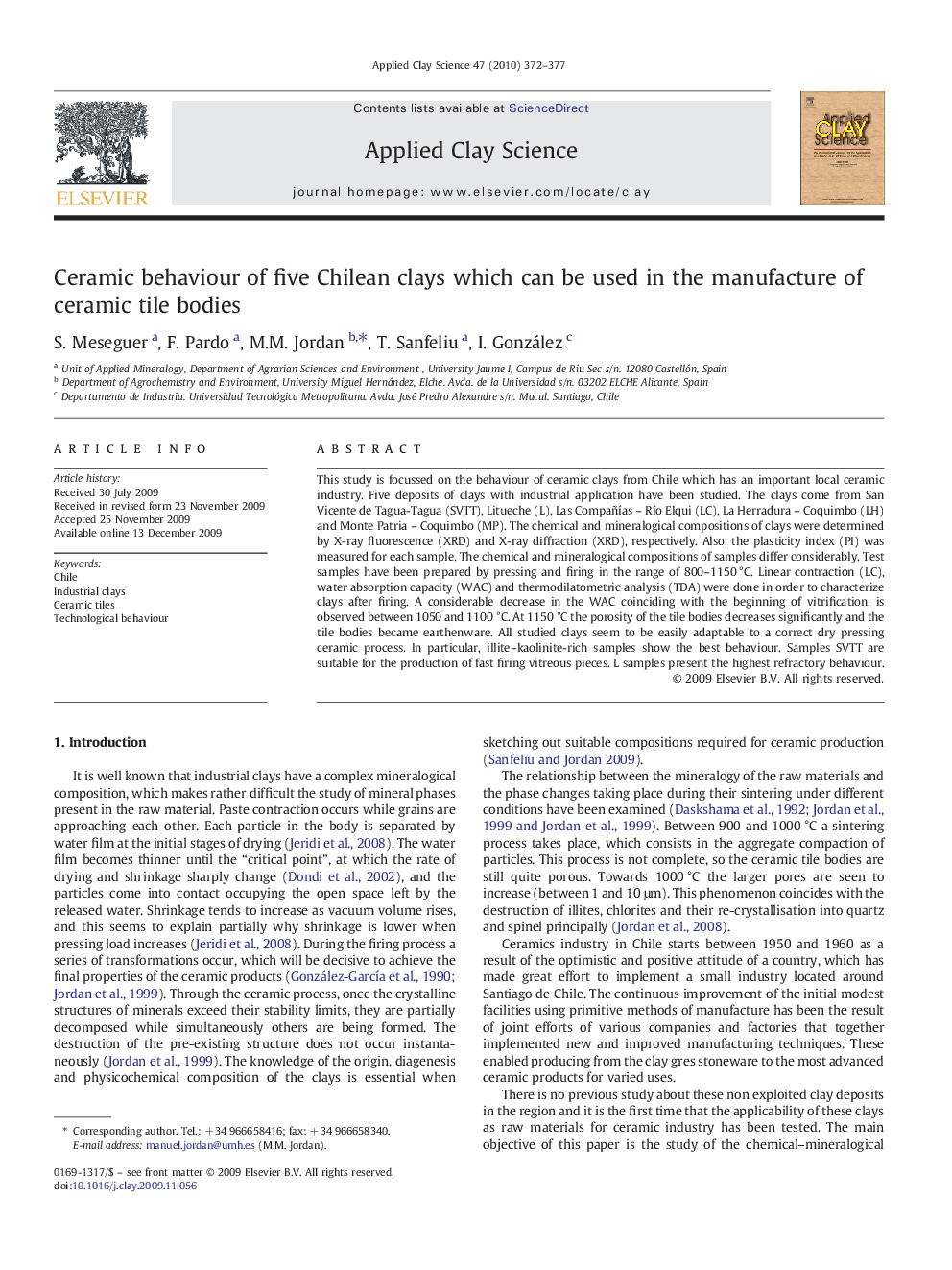| Article ID | Journal | Published Year | Pages | File Type |
|---|---|---|---|---|
| 1696154 | Applied Clay Science | 2010 | 6 Pages |
This study is focussed on the behaviour of ceramic clays from Chile which has an important local ceramic industry. Five deposits of clays with industrial application have been studied. The clays come from San Vicente de Tagua-Tagua (SVTT), Litueche (L), Las Compañías – Río Elqui (LC), La Herradura – Coquimbo (LH) and Monte Patria – Coquimbo (MP). The chemical and mineralogical compositions of clays were determined by X-ray fluorescence (XRD) and X-ray diffraction (XRD), respectively. Also, the plasticity index (PI) was measured for each sample. The chemical and mineralogical compositions of samples differ considerably. Test samples have been prepared by pressing and firing in the range of 800–1150 °C. Linear contraction (LC), water absorption capacity (WAC) and thermodilatometric analysis (TDA) were done in order to characterize clays after firing. A considerable decrease in the WAC coinciding with the beginning of vitrification, is observed between 1050 and 1100 °C. At 1150 °C the porosity of the tile bodies decreases significantly and the tile bodies became earthenware. All studied clays seem to be easily adaptable to a correct dry pressing ceramic process. In particular, illite–kaolinite-rich samples show the best behaviour. Samples SVTT are suitable for the production of fast firing vitreous pieces. L samples present the highest refractory behaviour.
